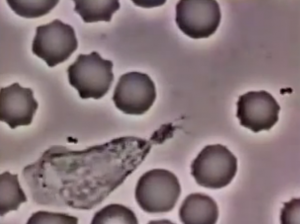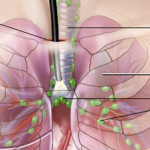White blood cells or WBCs in the body are responsible for protecting the body from infections. The abnormal low cell count is also known as Neutropenia in which a person gets infections easily as the cell count gets really low. The body is no more able to fight germs like bacteria and such infections can also be fatal. It is not rare for children to suffer from the same. Any child can have a low white blood cell count; some might even be born with it. The cells not only decrease but also increase in their destruction by a viral infection. When a child is fighting a viral infection the body uses plenty of WBCs. However chances of self healing in this case are pretty high. The problem also means a deficiency of blood circulating leukocytes. The normal count is somewhere in between 5,000 to 10,000.
Symptoms
There are hardly any external symptoms of this deficiency. But at times the following can be associated with it:
- Cough and Fever which could be a common sign of infection
- Chills and cramps in the body
- Difficulty in breathing as lungs could get infected easily
- Diarrhea
- Redness, pain or abscess filled swelling in certain parts of the body
- Mouth sores and swollen and bleeding gums
- Since this deficiency increases the risk of infections, problems in skin, lungs, throat and mouth could be really common and might also get severe wherein immediate medical assistance is required and treatment usually involves antibiotics.
- Apart from these mild infections, the child could get severe infections as well.
Causes
- Side effects of therapies and treatments such as radiation and chemotherapy for cancer treatment
- Leukemia
- Tuberculosis.
- Infections like mononucleosis
- Deficiency of folic acid or vitamin B-12 in the body
- Autoimmune ailment likes lupus.
- In some cases the deficiency of cells is because their blood cells are attacked by their own immune system.
- Problems with the bone marrow and aplastic anemia can also cause white blood cell deficiency.
- Children going though chemotherapy often undergo other tests to confirm if their blood cell count is normal as this cancer treatment can affect the blood levels. Thus it is always important to be cautious and prevent further complications.

How is it diagnosed?
The healthcare provider would need to check the symptoms as well as the medical history through a variety of blood tests and other tests as well.
- Usually doctors draw the blood sample and blood levels of every single type of blood cell also known as complete blood count.
- Once the low count has been identified the doctors might also run a bone marrow test. A bone marrow is a sponge like tissue in the middle of the blood cell making bones.
- A bone marrow aspiration test or biopsy can also be done. This treatment makes the child sleepy and is painless with the help of medicines. A syringe is used to take a sample of the bone marrow from the hip bone to check the particular sample with the best available tests. This type of diagnosis also makes the doctors able to check if the right amounts of cells are being made by the bone marrow and if they are normal. Also it might also be easier through this test to explain if a disease affecting the bone marrow is also responsible for the low cell count as well.
- Your child’s doctor may check your child’s blood cells levels from time to time if your child gets treatment for another illness and doctors know the treatment may cause neutropenia.
Treatment
Two very common treatments are:
- Antibiotics in order to reduce infection
- Medication to enable the bone marrow for making white blood cells.
In some cases children might also need a bone marrow transplant. In this treatment bone marrow is donated by someone and is transplanted into the bone of the child’s body in order to make the required healthy white blood cells. Parents should be extremely careful about the right and timely diagnosis and take the tests on time. It is very important to be patient as the tests and the overall process might be taxing.
Keeping a chart of things such as diet, medicines and physical activities that can be done or the ones to be avoided is also crucial for better results. When abnormal symptoms and frequent infections take place then immediate medical help must be taken.

